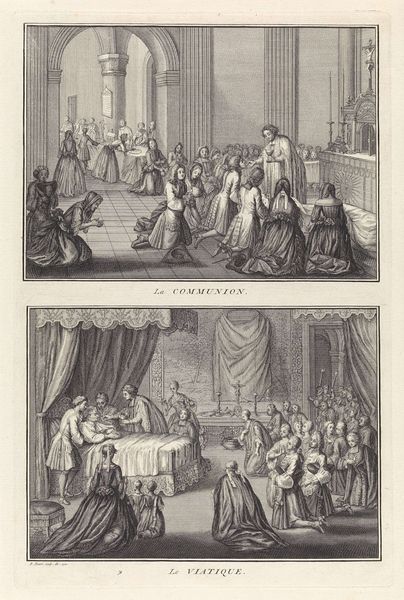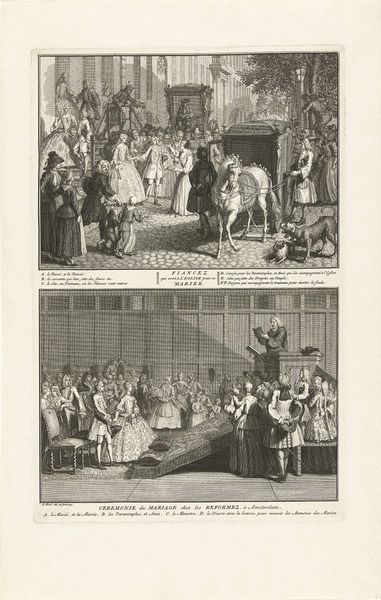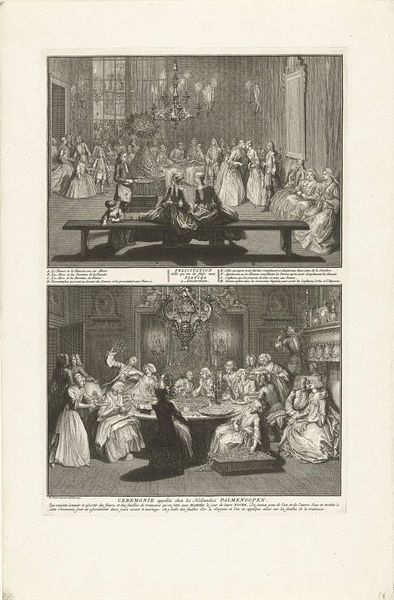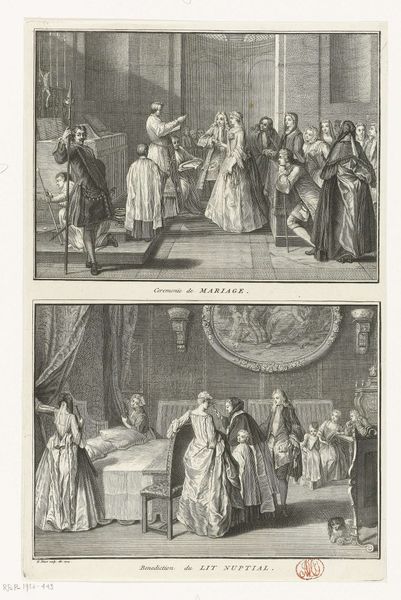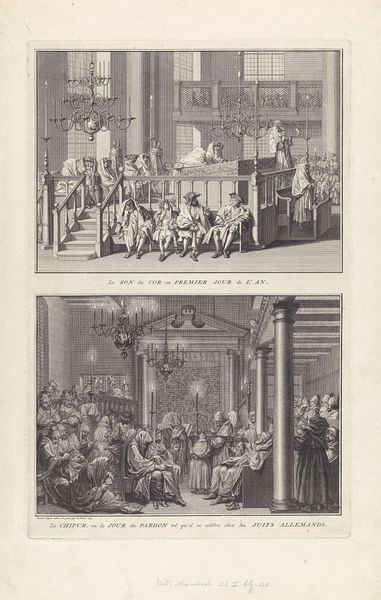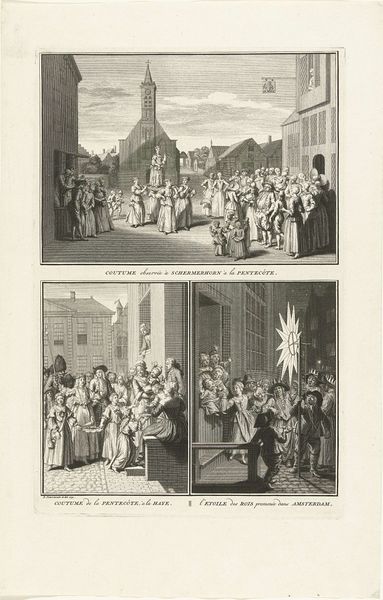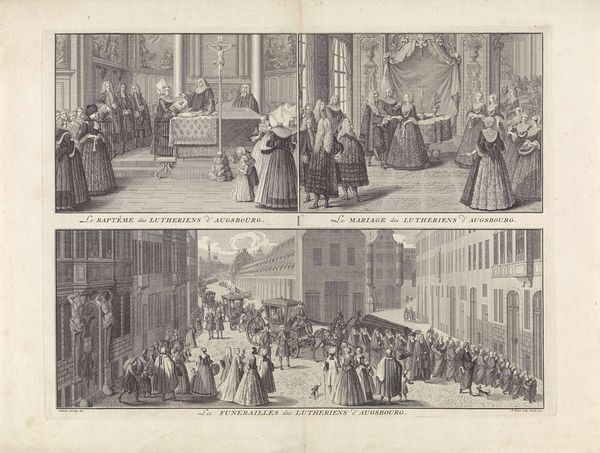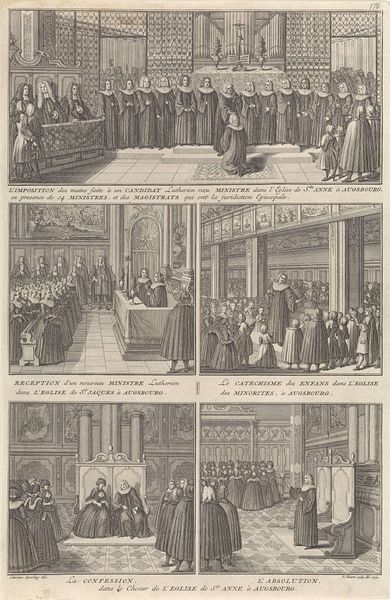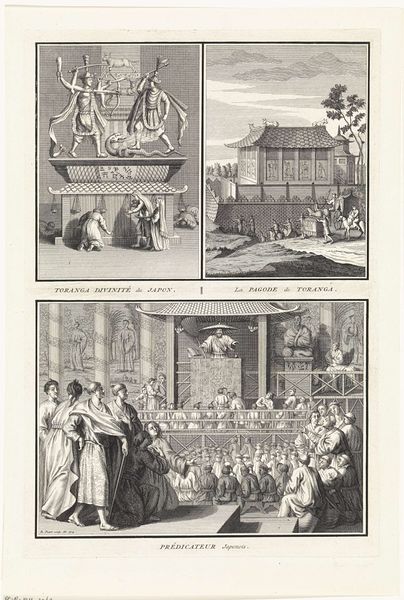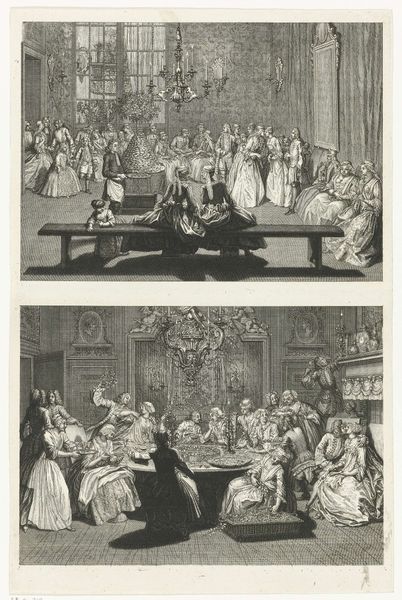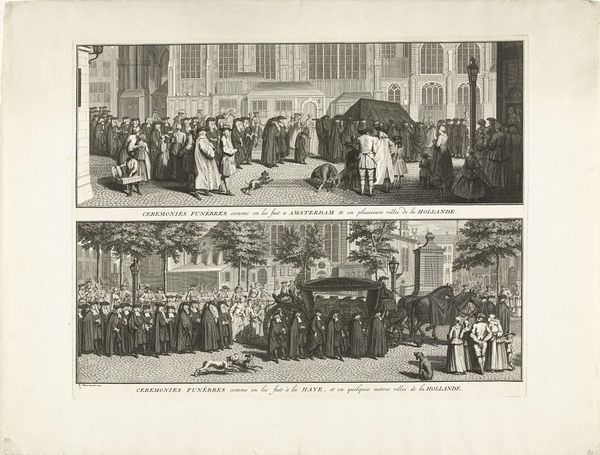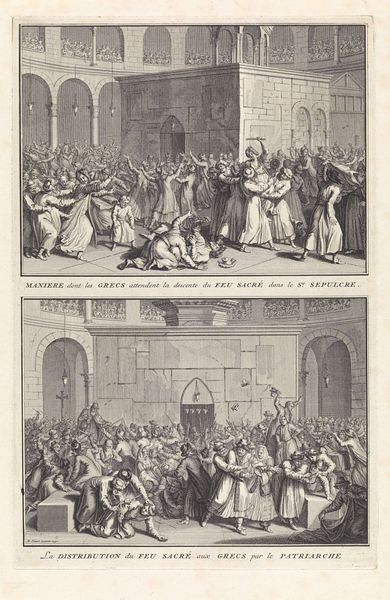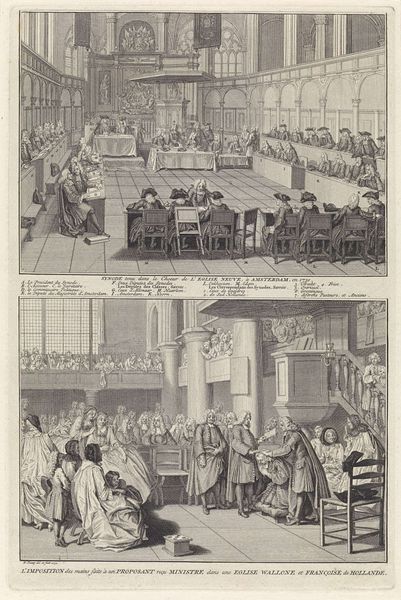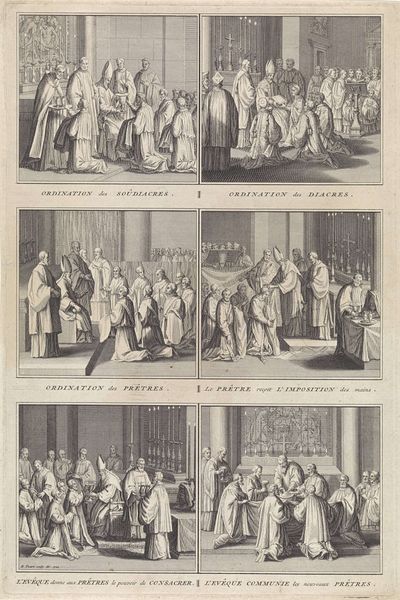
drawing, print, engraving
#
drawing
#
baroque
#
dutch-golden-age
# print
#
old engraving style
#
traditional media
#
genre-painting
#
engraving
Dimensions: height 344 mm, width 225 mm
Copyright: Rijks Museum: Open Domain
Curator: This engraving by Bernard Picart, dating from around 1730, is titled "Doop en Avondmaal bij de Gereformeerden te Amsterdam," or "Baptism and Holy Communion among the Reformed in Amsterdam." It’s quite a fascinating snapshot of religious life, wouldn't you agree? Editor: Absolutely! The first thing that strikes me is the clear division, literally. Two separate scenes, two separate rituals, carefully composed to present... what, exactly? Order? Restraint? Curator: Indeed, order is a key element here. Picart provides a look at religious life within the Reformed Church in Amsterdam. Looking closely, we can see that at the top of the composition, Picart depicts baptism. Below that, is holy communion. These were important pillars of their faith. Editor: And let's talk about the technique itself. Engraving: a process demanding precision, repetition... labour. You see the same almost obsessive attention to detail mirrored in the scenes. Note how the individuals are all rigidly placed, the geometric shapes constructed around their clothing. There's a sense of production happening here, in terms of how this print, and more importantly these social events, come into being. Curator: Precisely. The context, then, becomes central. The rituals themselves were ways of enforcing social cohesion and spiritual conviction. Notice, for example, the expressions and interactions, what kind of authority, gender, or social structures were they performing? It also hints at the growing prominence of the middle class and their involvement in religious affairs. Editor: The artist highlights certain class divides as well by focusing the production value around these Amsterdam residents. It almost creates a marketing brochure designed to put these families on display. These aren't necessarily scenes of piety so much as they are structured social events rooted in specific conditions of making and observing. Curator: I appreciate your interpretation of Picart's commentary on consumption as we witness these two classes intertwine together in what is likely meant to convey their pious commitment to each other. It's a useful lens. Editor: This exercise reveals that religious activities can and should also be framed from a socio-economical and material background.
Comments
No comments
Be the first to comment and join the conversation on the ultimate creative platform.
